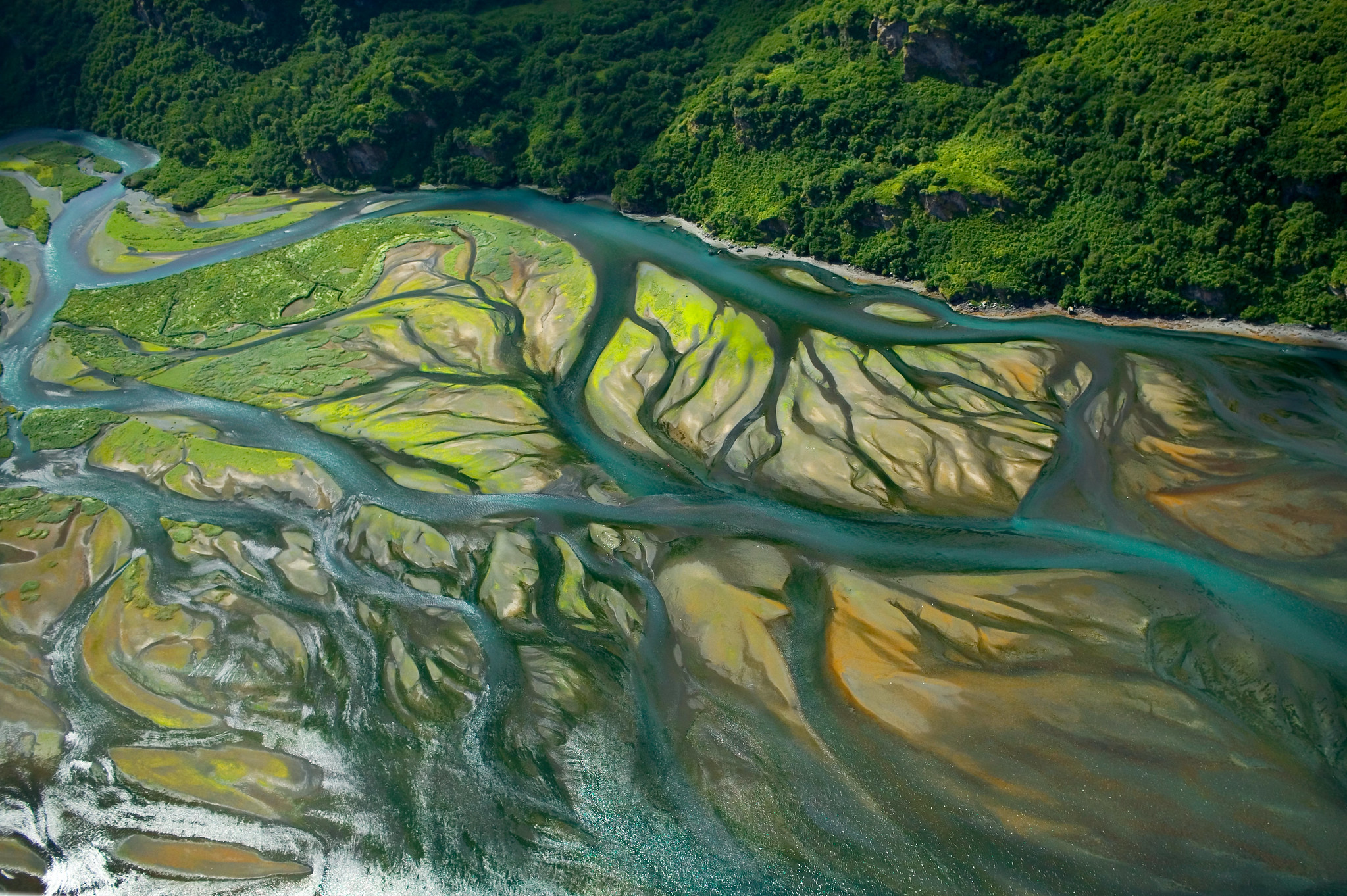Water
 If the continental United States represented the entire surface of the earth, water would cover as much as every state west of the Mississippi River, with enough left over to cover the state of New York. Of the total volume of water on earth, about 97% is saltwater, and only about 3% is fresh. 98% of the freshwater is locked away in groundwater, ice caps, and glaciers, meaning only 2% of the world’s freshwater is available for human use. That’s about 148 gallons per person on Earth. In comparison, a 10-minute shower can take between 20 and 50 gallons of water.
If the continental United States represented the entire surface of the earth, water would cover as much as every state west of the Mississippi River, with enough left over to cover the state of New York. Of the total volume of water on earth, about 97% is saltwater, and only about 3% is fresh. 98% of the freshwater is locked away in groundwater, ice caps, and glaciers, meaning only 2% of the world’s freshwater is available for human use. That’s about 148 gallons per person on Earth. In comparison, a 10-minute shower can take between 20 and 50 gallons of water.
The Earth typically does not gain or lose water in substantial amounts, so the water you use likely existed, in some form, before the first living creature evolved. While the amount of water on the planet does not change significantly, the amount of water in parts of Earth’s system can fluctuate wildly. In addition, water is not distributed evenly across the land surface. The result is that some areas are climatically wetter or drier than others, which shapes local agriculture and restricts which crops and livestock can prosper in a given region.
In the United States, some areas are expected to become drier as the climate, including average temperature and average precipitation, changes. Conversely, other areas are predicted to become wetter. The frequency of extreme weather events--severe floods, persistent drought, and severe storms--is also expected to change in some regions. The effect of climate change on water availability and wet and dry seasons has numerous potential implications for agriculture, especially in areas where the climate is expected to become less suitable to sustained agricultural production.
-
Recursos de Adaptación en Español
Recursos de adaptación en Español incluidos libros de trabajo de planificación y estrategias y enfoques de adaptación.
-
Forested Watersheds Adaptation Menu
Significant changes in temperature and precipitation present challenges to ensuring long-term ecosystem health,…
-
Students take data-driven action!
A new education module help students move from data literacy into action.
-
Effects of Climate Change on Aquaculture in the Gulf of Maine
Aquaculture or sea farming, is connected to the health of ocean ecosystems and is impacted by the effects of climate…
-
Puget Sound Region: Tree Species Vulnerability Assessment
This report summarizes climate change projections for the Puget Sound region and provides an assessment of tree species…
-
Investigating Sea Level Rise and Saltwater Intrusion in Forests
To better understand the risks and enable climate-smart decision-making, researchers at Rutgers University were engaged…
-
South Africa Committed to Climate Change Interventions in the Agricultural Sector
South Africa committed to climate change intervention in its agricultural sector by introducing the Agriculture, Food…
-
Climate Change, Global Food Security, and U.S. Food System Assessment
The result of a three-year effort led by the U.S. Department of Agriculture, this study brought together over thirty…
-
Breeding drought-tolerant pearl millet using conventional and genomics approaches: Achievements and prospects
Reviewed and discoursed the advancements in conventional breeding, progress in genomic resources development and…










